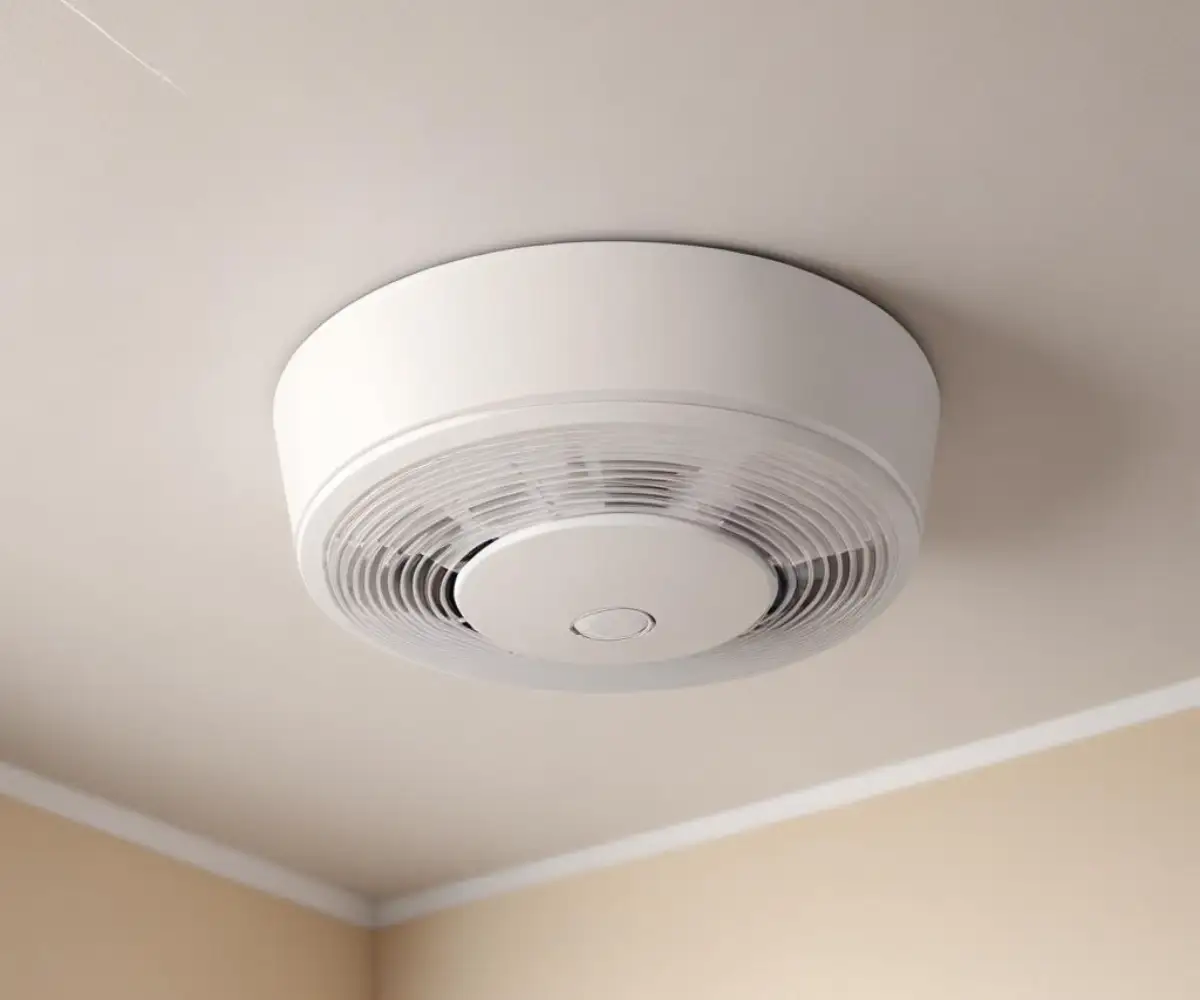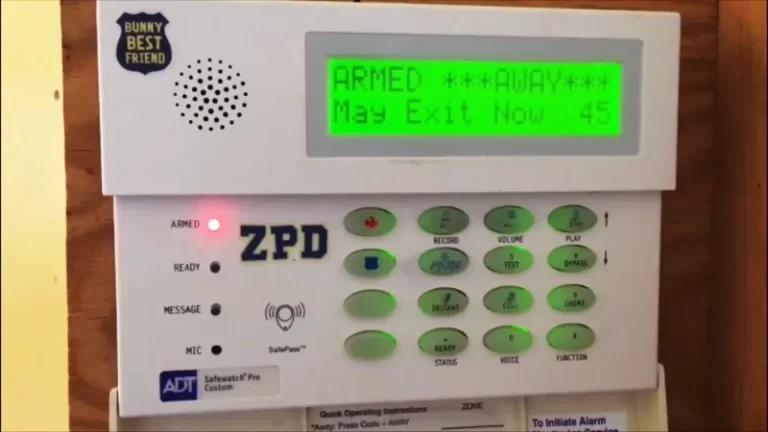Smoke Alarm 3 Beeps Then Silence? Uncovering the Urgent Warning
That sudden, jarring sound in the middle of the night: three sharp beeps from a smoke alarm. Just as you’re jolted awake, ready to spring into action, an unnerving silence follows. It’s not the continuous blare of a fire, nor the intermittent chirp of a low battery. This confusing signal can leave you wondering if you imagined it, or worse, if it’s a problem you can ignore.
Do not ignore it. A smoke alarm that beeps three times and then stops is sending a critical message. This pattern is not an accidental glitch; it is an intentional warning that signifies a serious issue with the detector itself, meaning it may not protect you in a real fire.
You'll Learn About
Decoding the 3-Beep Signal: What Your Smoke Alarm Is Really Saying
Unlike the standardized T3 alarm pattern (three beeps, pause, repeat) for an active fire, the “3 beeps then nothing” signal is typically a malfunction or error code. The silence that follows is perhaps the most dangerous part, as it can create a false sense of security, leading you to believe the problem has resolved itself.
For many leading brands, including First Alert and Kidde, three intermittent chirps or beeps point directly to a unit malfunction or its end-of-life. This is your smoke detector telling you that its internal sensors or components have failed a self-diagnostic test and it can no longer be trusted to detect smoke.
Top 5 Reasons for the 3 Beeps and Sudden Silence
Understanding why your alarm is sending this specific signal is the first step toward fixing it. The cause is often one of a few critical issues that require immediate attention to ensure your home remains protected.
1. Critical Malfunction or Sensor Failure
The most serious cause is an internal fault. The smoke detector’s brain—its microprocessor—is constantly running self-checks. If it detects a problem with the smoke sensor or other critical components, it will sound a malfunction alarm. The beeping may stop as the self-test cycle completes, only to return later.
2. End-of-Life (EOL) Warning
Every smoke alarm has an expiration date. Most detectors are designed to last for 10 years from the date of manufacture. As they approach this milestone, their sensors degrade and become unreliable. The 3-beep pattern is a common end-of-life notification, designed to be distinct from a fire or low-battery alert.
3. Unstable Power or Battery Issues
While a single chirp usually signals a low battery, a 3-beep sequence can indicate a more complex power problem. In hardwired units, a failing backup battery, loose wiring, or a power surge can cause the unit to enter an error state. It might beep three times during the power fluctuation and then cease once the power stabilizes or the backup battery is completely drained.
4. Environmental Contamination
Dust, insects, or even high humidity can interfere with the smoke alarm’s sensing chamber. If debris briefly obstructs the sensor, it can trigger a fault alarm. The alarm might stop once the contaminant shifts or clears. This is common for alarms located near dusty areas, kitchens, or bathrooms without proper ventilation.
5. Interconnected System Faults
In homes with interconnected hardwired alarms, a fault in one unit can sometimes cause confusing signals in others. The “3 beeps then nothing” could be one alarm signaling a malfunction, which briefly triggers a response in other units before the system quiets down. Identifying the original source is key to resolving the issue.

Your Immediate Action Plan: A Step-by-Step Troubleshooting Guide
When you hear this warning, take immediate and methodical action. Following these steps will help you diagnose the problem safely and restore your home’s fire protection system.
Step 1: Identify the Alarming Unit
If you have an interconnected system, the source of the beeps may not be obvious. Look for the alarm with a rapidly flashing red or green LED light. This is the unit that initiated the warning and requires your attention.
Step 2: Press the “Test/Silence” Button
Press and hold the test/silence button on the identified unit for a few seconds. This may temporarily hush the malfunction warning. If the beeping stops, it doesn’t mean the problem is solved; it simply gives you quiet time to continue troubleshooting.
Step 3: Perform a Full Power Cycle (The “Hard Reset”)
A hard reset can clear a processor’s memory of a temporary error code. For hardwired alarms, go to your circuit breaker, turn off the power to the alarms, remove the unit from its bracket, disconnect the power harness, and take out the backup battery. For battery-only units, simply remove the battery.
With the unit de-powered, press and hold the test button for 15-30 seconds to drain any residual charge. Then, reinstall a fresh battery, reconnect the power harness (for hardwired models), and restore power at the breaker. The unit should chirp once to confirm power is restored.
Step 4: Thoroughly Clean the Smoke Detector
Dust is a primary cause of malfunctions. Use a vacuum cleaner with a soft brush attachment to gently clean all vents and openings on the alarm. A can of compressed air can also be used to blow out any stubborn debris from the sensing chamber. Never use water or cleaning solvents.
Step 5: Replace the Batteries
Even if you don’t suspect a battery issue, install a brand-new, high-quality battery recommended by the manufacturer. In hardwired units, the backup battery is crucial for stable operation, and a failing one can cause erratic behavior.
Understanding Different Alarm Signals
It’s vital to distinguish between different smoke alarm sounds to react appropriately. Each signal communicates a different level of urgency and requires a unique response.
| Signal Pattern | Probable Meaning | Immediate Action Required |
|---|---|---|
| 3 Beeps, Pause, then Silence (Intermittent) | Malfunction, End-of-Life Warning, or Power Fault | Identify unit, perform a hard reset, clean, and replace battery. If it persists, replace the entire alarm immediately. |
| Continuous Loud Alarm (T3 Pattern: 3 Beeps, Pause, Repeat) | Smoke or Fire Detected – EMERGENCY | Evacuate the building immediately. Call 911 from a safe location. |
| Single Chirp Every 30-60 Seconds | Low Battery Warning | Replace the battery with the recommended type as soon as possible. |
| One Loud, Isolated Beep | Power-up signal, temporary fault, or other alert. | This can be complex; if you hear a fire alarm’s one loud beep, it warrants further investigation to rule out any issues. |
When Troubleshooting Fails: Knowing It’s Time for a Replacement
If you have reset, cleaned, and installed a new battery, but the 3-beep warning returns, the conclusion is unavoidable: the smoke alarm is faulty and must be replaced. There is no other safe option.
All smoke alarms should be replaced every 10 years, regardless of their behavior. You can find the manufacturing date printed on a label on the back of the unit. If it’s more than a decade old, its ability to detect fire is compromised.
The “Ghost in the Machine”: Unraveling Interconnected System Mysteries
One of the most perplexing issues homeowners face is a fault in an interconnected system. A single malfunctioning detector can send error signals across the entire network, causing other alarms to sound off without a clear reason. This can make it incredibly difficult to locate the source of the problem.
To isolate the faulty unit, you may need to disconnect all alarms from their mounting brackets and power them solely with their backup batteries. Wait to see which device begins the 3-beep malfunction chirp on its own. That is your culprit. It’s also worth confirming the noise is from a smoke alarm. Sometimes, a strange chirping noise in the house that isn’t a smoke detector can be traced to a carbon monoxide alarm or another appliance.
Beyond the Beeps: Proactive Smoke Alarm Maintenance for True Peace of Mind
A smoke alarm is one of the most important safety devices in your home, but it’s not a “set it and forget it” appliance. Regular maintenance is essential to ensure it functions when you need it most.
First, test your alarms monthly by pressing the test button. This ensures the siren and internal electronics are working. Second, clean all units twice a year to prevent dust buildup. Finally, unless you have a sealed 10-year battery, replace the batteries annually. A simple rule is to do this when you change your clocks for daylight saving time. Persistent high humidity, perhaps from a hidden leak that could even lead to issues like a squishy bathtub floor, can also cause smoke detectors to malfunction and report errors, so be mindful of the alarm’s environment.
Your family’s safety is paramount. The “3 beeps then nothing” signal is a clear and urgent call to action. By understanding what it means and how to respond, you can ensure your home’s first line of defense against fire is always ready to protect you.

